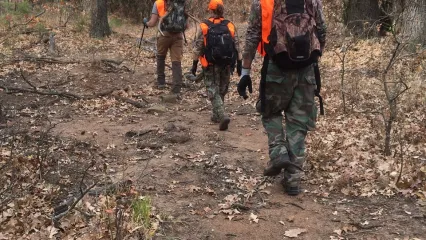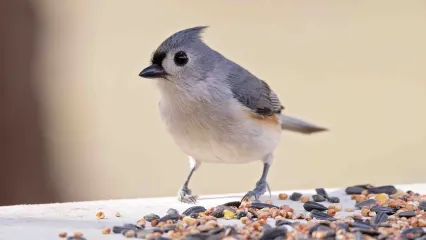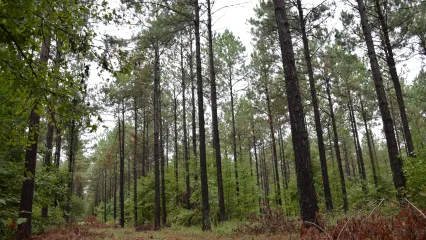Area Notice
The Canton WMA shooting range is closed for major improvements and expansion. The project will include major improvements to the 200-yard rifle range and an additional 100-yard rifle range, 50-yard pistol range, archery range and shotgun range. This project is expected to take about 6 months, with a targeted reopening in Spring 2026. We understand that closing a shooting range during hunting seasons isn’t ideal and we appreciate your patience.
Attention Non-Residents
The Oklahoma Wildlife Conservation Commission adopted new rules in 2025 that require non-residents accessing certain Oklahoma public hunting and fishing areas to check in and out of the area. By checking in and out of these areas, hunters, anglers, shooters, birdwatchers, hikers and any other users can help the Wildlife Department better understand how the area is being used. There is no additional cost associated with checking in or out of an area. There is no limit to the number of check ins for an individual in a year.
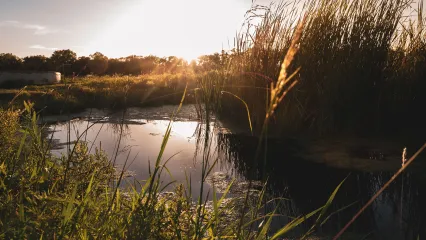
Contacts
Area Details
Canton WMA covers 14,877 acres in Blaine, Dewey, and Major Counties in northwest Oklahoma, located around Canton Lake (northwest of Canton, Oklahoma, or west of Longdale, Oklahoma). Canton WMA is predominantly floodplain type habitat with some upland sites occurring toward the western end of the area.
Habitat varies on the area from postoak/blackjack cross timbers type habitat on the eastern end to sandsage grassland interspersed with sandplum, eastern red cedar, American elm, and black locust on the west end. Much of the area adjacent to Canton Lake and the North Canadian River is densely vegetated bottomland habitat dominated by eastern cottonwood, black willow, buttonbush, and roughleaf dogwood. The average annual precipitation is about 27 inches.
From Canton: 1 mile west on State Hwy 51, 1½ miles north on State Hwy 58A, across Canton Dam. From Longdale: 1 mile west on county blacktop road (E0610).
- Quail: Bobwhite quail are present in fair numbers.
- Deer: White-tailed deer are present in good numbers but are highly sought after.
- Turkey: Rio Grande wild turkeys are present in good numbers but are highly sought after.
- Rabbit: Cottontail rabbits are relatively common on Canton. Jackrabbits are occasionally present, but are not common.
- Furbearers: Coyote, bobcat and raccoon are available.
- Dove: Dove are present in fair numbers early in dove season.
- Waterfowl: Duck hunting is available on Canton lake and several cutoff oxbow lakes on the management area.
- Black-tailed Prairie Dog: Present on the Corps of Engineers lake property adjacent to the area. Hunting of prairie dogs is not allowed.
- Osprey: Present during spring and fall migration near Canton lake dam.
- Bald Eagle: Present around Canton Lake November through March.
Habitat management on Canton includes controlled burning on 1,000 to 1,500 acres annually, and prescribed grazing on 5,200 acres to manage for native grasses and forbs. In addition, approximately 1,200 acres of ag lease fields and food plots are scattered across the area and planted annually. 21 windmills and solar water pumps have been installed to provide wildlife water.
Fifteen primitive camping areas are available at designated areas along most access roads on the area. Additionally developed campgrounds with RV hookups are available around Canton lake. Contact the U.S. Army Corps of Engineers for more information on the developed campground sites (580/886-2989). Lodging and restaurants are available around Canton WMA at Canton, Seiling, Fairview, and Longdale. The Canton chamber of commerce can be reached at (580/886-2216)
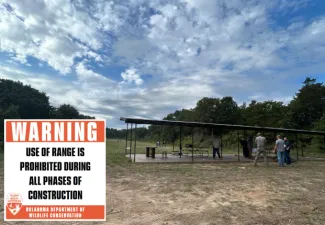
Warning: Use of Range is Prohibited During All Phases of Construction
Features will include: 200-yard rifle range with 4 covered shooting benches, 100-yard rifle range with 4 covered shooting benches, 50-yard pistol range with 4 covered shooting benches, an archery tower/range, a shotgun/trap range, and ADA access throughout.
Coordinates: 36° 7'23.36"N 98°34'13.55"W
Driving Directions: From Hwy 58 in Longdale, go west on E0610 for 1.5 miles. Turn south on Thunder Road for 0.75 miles.
Be sure to review Department-Managed Area Rules on shooting ranges before use.
Each shooting range project is expected to take about 6 months, we understand that closing a shooting range during hunting seasons isn’t ideal and we appreciate your patience.
Canton lake is well known for walleye fishing and is also an excellent crappie and sandbass fishery. Management efforts include walleye stocking, hybrid stripped bass stocking, and construction of brush piles to provide habitat. Fishing is also available at several cutoff oxbow lakes located on the western end of the area.
Area closed to all activities for controlled deer hunts:
Nov 22-23, 2025
Closed Seasons
Same As Statewide Seasons
Seasons w/ Special Restrictions
- Crow, Rabbit, Squirrel, Snipe, Woodcock
Closed the first nine days of deer gun season.
- Deer Gun
Closed for controlled hunts (opening weekend) and the last seven days of deer gun season. Closed to antlerless hunting.
- Quail
Closed during the first nine days of deer gun season. Hunting hours close at 4:30 p.m. daily. Closed to non-resident hunting February 1-15.
- Pursuit with Hounds for Furbearers, Predator/Furbearer Calling
Closed during deer gun season.
- Turkey Fall Gun
Shotgun only.
- Trapping
Open to water sets, live box traps and enclosed trigger traps only through Jan 31. Open same as statewide Feb 1 through end of February.
- Turkey Spring, Youth Turkey Spring
One-tom limit; seasons combined, area combined.
The Prairie Dog Refuge is closed to prairie dog hunting.
Closed to all nonhunting activities, except hunter camping, from Oct. 1 - Feb. 15.
Hunter and angler camping is allowed in designated areas.
Canton Chamber of Commerce
PO Box 307, Canton 73724
580-886-2216
Oklahoma Tourism and Recreation Department
Post Office Box 52002
Oklahoma City, OK 73152-2002
(800) 652-6552 or (405) 521-2409
www.travelok.com
Seiling Chamber of Commerce
580-922-4460
Watonga Chamber of Commerce
PO Box 537, Watonga 73772
580-623-5452
www.watongachamber.com
cwatonga@pldi.net
Okeene Chamber of Commerce
PO Box 704
Okeene, 73763
www.okeene.com
okchamber@pldi.net
Apprentice Designation: A Learner's Permit for Hunting
Hunter education has greatly reduced hunting accidents, but if you can’t complete a course right away, the apprentice designation allows you to hunt under supervision. It works like a learner’s permit, giving you the chance to gain real experience safely until you finish hunter education.
Exploring the New Herron Family WMA
The new Herron Family WMA is more than 17,000 acres of hunting land, it is also adventure, access, conservation, and tradition. Thanks to a unique partnership, Oklahoma residents now have a new place to chase deer, call turkeys, hear quail, and pass on the outdoors to the next generation.

